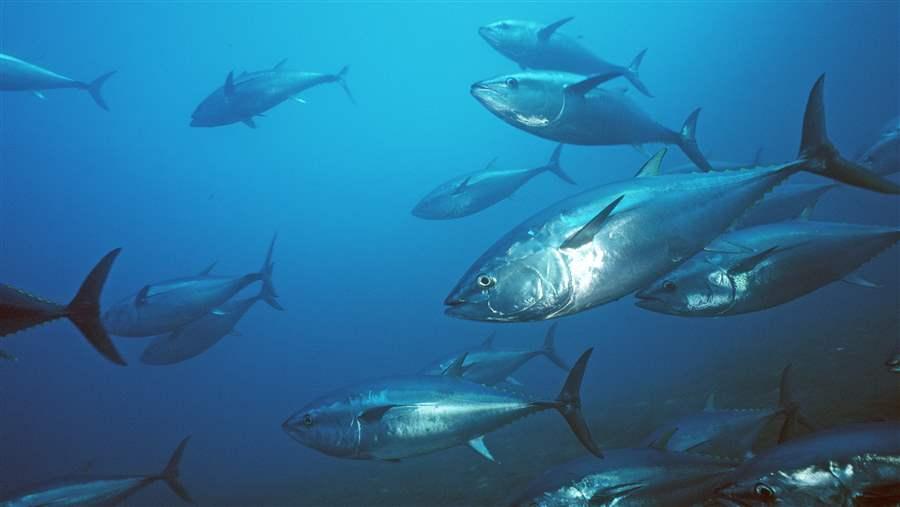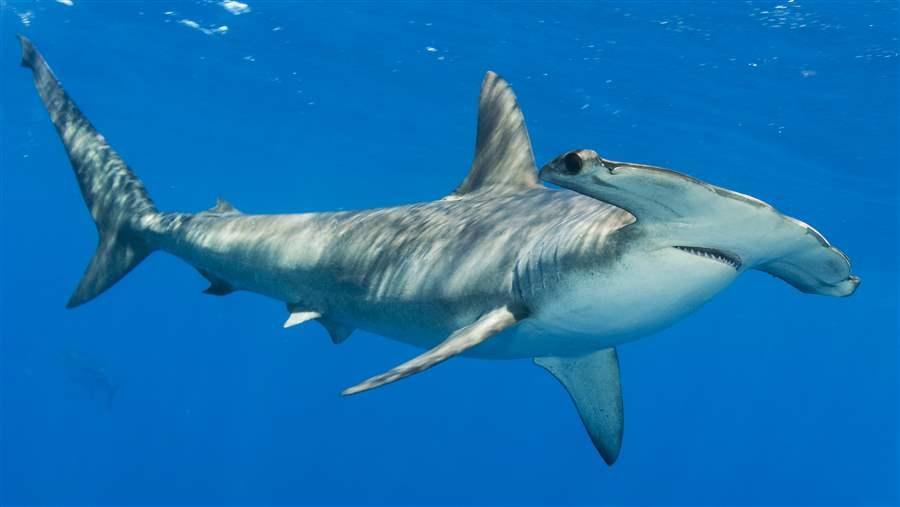Pew to Eastern Pacific Fishing Nations: Take Lead in Conservation
Action needed on tuna, sharks, and compliance measures
The Inter-American Tropical Tuna Commission (IATTC) is the oldest regional fisheries management organization for tuna in the world, responsible for the conservation and management of tuna and other marine resources in the eastern Pacific Ocean. In the past, Members have taken the initiative, ahead of other regional management organizations, to put in place important practices such as requiring onboard observers to monitor catches and to record data. Yet as more challenging problems have come to the forefront in recent years, progress seems to have stalled. IATTC Members routinely put off making critical decisions and often block needed measures altogether.
 © 2014 Richard Herrmann
© 2014 Richard HerrmannHowever, time is running out. Several ecologically and commercially important tuna populations, as well as shark species, need urgent action. Members need to demonstrate the kind of leadership the region requires at the 87th meeting of the IATTC in Lima, Peru, July 14–18.
Here’s how:
Implement strong conservation and management measures for tuna species
There is increasing cause for concern about the health of tuna populations in the eastern Pacific. Existing fishing limits have failed to protect several commercially and ecologically important stocks. Recent assessments show that additional management measures must be taken to reduce fishing pressure on yellowfin, bigeye, and Pacific bluefin tuna.
At their meeting, IATTC Members should:
- Adopt a precautionary, science-based rebuilding plan for Pacific bluefin tuna.
- Mandate electronic tracking of fish aggregating devices and rules to manage their use effectively
- Establish appropriate target and limit reference points for albacore, skipjack, yellowfin, bigeye, and Pacific bluefin tuna.
- Increase observer coverage on longline vessels.
Precautionary, science-based catch limits and gear controls are critical to safeguarding depleted tuna populations.
Adopt conservation and management measures to protect sharks
Approximately 100 million sharks are killed in commercial fisheries every year, an unsustainable amount. Whether this catch is unintended, unwanted, or highly sought after, the practice and its effect on ocean ecosystems require urgent action. Sharks should be treated like the endangered marine species they are and released alive wherever possible. Any targeted take should be permitted only when scientific advice has confirmed its sustainability.
To protect shark populations, IATTC Members should:
- Prohibit the retention of biologically vulnerable shark species, particularly silky and hammerhead sharks.
- Limit the mortality of other shark species, including blue and shortfin mako sharks, to sustainable levels.
- Require best practices for reducing bycatch.
Taking action to protect sharks will provide long-term benefit to the greater marine ecosystem.
 © 2014 C & M Fallows/Oceanwide Images
© 2014 C & M Fallows/Oceanwide ImagesImprove compliance and effectively deter IUU fishing
Illegal, unreported, and unregulated (IUU) fishing remains a threat in the eastern Pacific. Cases of authorized vessels failing to comply with IATTC rules continue to arise; 13 vessels are currently on the IATTC’s list of known IUU vessels.
To address critical IUU loopholes in IATTC policies, Members should:
- Strengthen port State measures to include minimum standards for inspections and effective follow-up measures between a vessel’s registered state and the port State.
- Require International Maritime Organization (IMO) numbers for fishing vessels authorized to operate in IATTC waters.
- Ban all forms of transshipment at sea.
Addressing illegal fishing and enforcing compliance will benefit both the good actors and the greater marine ecosystem in the eastern Pacific.











